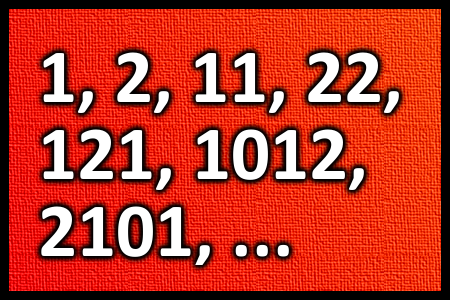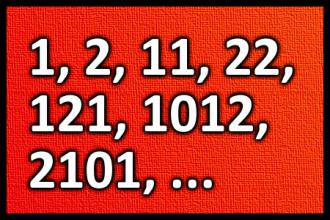What number comes next?
Look at the series (1, 2, 11, 22, 121, 1012, 2101), determine the pattern, and find the value of the next number!
Coffee Jokes - to celebrate International Coffee Day
International Coffee Day takes place on October 1, an occasion to celebrate coffee as a beverage and have fun with Coffee Jokes
I like my coffee like “I like my coffee” jokes.
Not made by me.
Why did the coffee file a police report?
Because it got mugged!
What do you call sad coffee?
A depresso.
How does Moses make his coffee?
Hebrews it.
Why are Italians so good at making coffee?
Because they know how to espresso themselves.
What did the coffee say to its date?
"Hey there, hot stuff!"
What's the best Beatles song about coffee?
"Latte Be."
Why did the barista get fired?
They kept showing up latte.
What do you call a cow who's just given birth?
De-calf-inated.
Check out some older Coffee Jokes on page 25 jokes that blend well with coffee
Why do coffee shops have bad Wi-Fi?
Because they want you to espresso yourself instead.
What did the coffee addict say to his doctor?
"I don't have a problem; I have a solution."
How is divorce like an espresso?
It's expensive and bitter.
Why did the hipster burn his tongue?
He drank his coffee before it was cool.
How does a tech guy drink coffee?
He installs Java.
Why did the coffee bean keep checking his watch?
Because he was pressed for time.
What do you call it when you steal someone's coffee?
A mugging.
How are coffee beans like teenagers?
They're always getting grounded.
What did the caffeine addict name his cats?
Cream and Sugar.
Why do programmers prefer dark coffee?
Because light attracts bugs.
What do you call it when coffee hurts you?
A brew-tality.
What do you call a newborn coffee bean?
A little squirt!
How does coffee relax after a long day?
It unwinds by brewing itself.
What did the caffeine addict name his cats?
Cream and Sugar.
Why do coffee beans always show up early?
Because they get roasted!
Why did the espresso keep checking his watch?
He was pressed for time.
What’s a coffee’s favorite spell?
Espresso Patronum!
How did the hipster burn his tongue?
He drank his coffee before it was cool.
What do you call a cow who just gave birth?
De-calf-inated.
How do programmers prefer their coffee?
They like it in Java.
Why do coffee lovers prefer dark roast?
Because light roast keeps them up at night.
What happens when you steal someone’s coffee?
It causes a mug shot!
Why was the coffee shop so quiet?
Because everyone was staying grounded.
I used to be a barista,
but I got fired for being too grounded.
What do you call a sleepy coffee bean?
A drowsy bean.
What do you call a coffee bean that can't sleep?
Caffeinated.
What do you call a coffee bean that's always late?
A tardy bean.
What do you call a coffee bean that's really small?
A tiny bean./p>
What do you call a coffee bean that's really strong?
A robust bean.
What do you call a coffee bean that's really weak?
A feeble bean.

